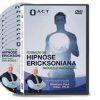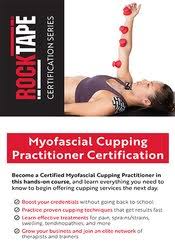Meghan Helwig – Myofascial Cupping Practitioner Certification
$200 Original price was: $200.$75Current price is: $75.
Shopping Instructions:
- DISCOUNT 15% : SHOP15
- Product Delivery: Within 1 – 12 hours after purchase.
Available for Pre-Order. This product will be available within a few days.
Meghan Helwig – Myofascial Cupping Practitioner Certification
Become a Certified Myofascial Cupping Practitioner in this hands-on course powered by RockTape, and boost your credentials as you learn everything you need to know to offer cupping services the next day.
Myofascial Cupping Practitioner Certification teaches the fundamentals of modern cupping techniques through a full day of interactive labs. Learn how to combine cupping and functional movement to produce the kinds of active treatment strategies that are revolutionizing rehab. Discover effective cupping treatments you can use for pain, sprains/strains, swelling, tendinopathies, and more.
- Review the principles of myofascial cupping and supporting evidence
- Describe the physiological and neurological effects of cupping
- Demonstrate how to apply cupping for best results
- Compare and contract common cupping techniques and review indications/contraindications for each
- Demonstrate how cupping techniques can be combined with corrective exercise to improve pain, sprains/strains, swelling, tendinopathies, and more
- Develop cupping applications based on your assessment/treatment approach and the individual needs of your patient
Would you like to receive Meghan Helwig – Myofascial Cupping Practitioner Certification ?
PRINCIPILES OF MYOFASCIAL CUPPING
- Movement, mobility, and motor control
- Movement Pyramid framework
- Fascial anatomy/physiology
- Physiological/neurological effects of cupping techniques
- Current literature related to cupping techniques
- Blood flow, fascial gliding, and the nervous system
- Indications, contraindications, and application safety
SKIN/FASCIAL SCREENING
FUNDAMENTAL CUPPING TECHNIQUES AND TREATMENT STRATEGIES
- Direction and pressure
- Decompression/compression forces
- External/internal glide methods
- Graded exposure techniques
- Sensory-motor retraining
- Integrating corrective exercise
APPLYING, CUPPING EFFECTIVELY
- Upper extremity and arm fascial chains
- Lower extremity and leg fascial chains
- Core, trunk, lumbopelvic regions, and long fascial chains
- Hip, trunk, rib cage, diaphragm, and neck
- Condition-specific applications
- Progression and regression protocol
CASE STUDIES AND PROBLEM SOLVING
- Case Studie
Related products
NLP & Hypnosis
NLP & Hypnosis
iAwake Technologies – Beginner’s Mind (Neuroflow Series) [6 WebRips – WAV User Manual – PDF]
NLP & Hypnosis
NLP & Hypnosis
NLP & Hypnosis
NLP & Hypnosis
NLP & Hypnosis
NLP & Hypnosis






![Iawake Technologies – Beginner’s Mind (neuroflow Series) [6 Webrips – Wav User Manual – Pdf]](https://copicourse.com/wp-content/uploads/2021/08/iawake-technologies-beginners-mind-neuroflow-series-6-webrips-wav-user-manual-pdf-300x400.jpg)





